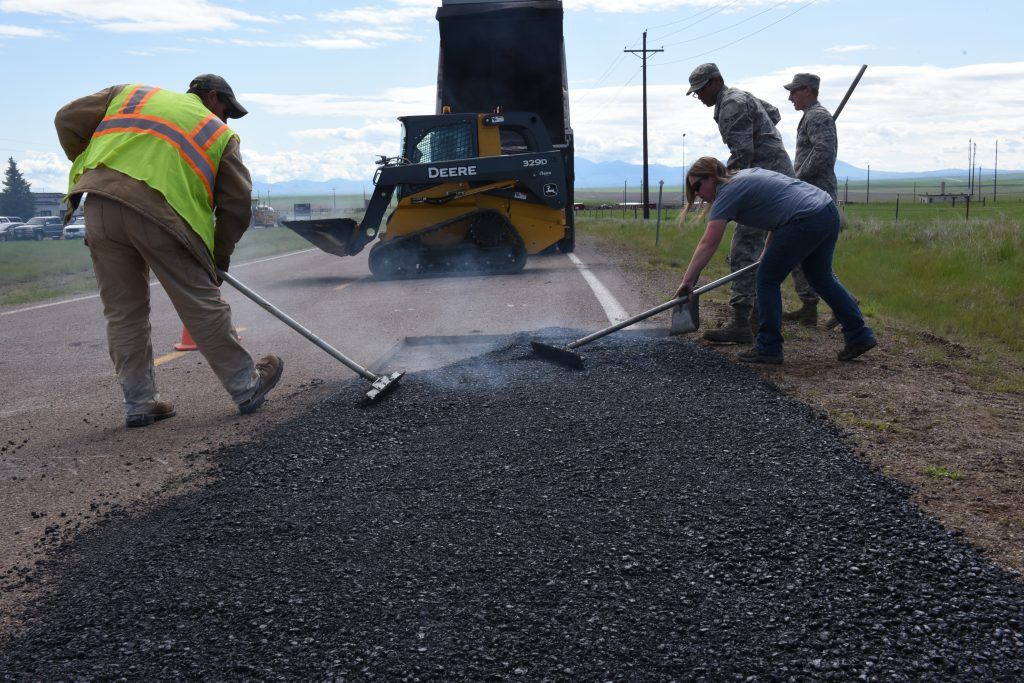Hot Mix Asphalt: The Foundation for Safe and Secure Angled Parking Lots
Unlocking the Tricks of Hot Mix Asphalt Technology
Exploring the depths of warm mix asphalt innovation discovers a globe where accurate solutions and thorough processes assemble to shape our roadways and infrastructure. The combination of accumulations, fillers, and binders isn't merely a building task but a tactical orchestration of sturdiness and performance. As we peer into the intricate dancing of parts, a tapestry of durability and sustainability unfolds. What exists beneath this surface area of asphaltic proficiency, and what secrets wait to be unveiled in the world of paving developments?
Importance of Warm Mix Asphalt
Hot Mix Asphalt plays a critical role in contemporary facilities growth as a result of its longevity and cost-effectiveness. As the most typically used paving material for roads, freeways, and car park, Warm Mix Asphalt uses an array of benefits that add to its relevance in construction projects. One essential benefit is its ability to hold up against heavy website traffic loads and harsh weather problems, providing a lasting and trusted surface area for transportation networks. Additionally, Warm Mix Asphalt is cost-effective in both preliminary building and long-lasting maintenance, making it a favored choice for many facilities tasks.
The toughness of Hot Mix Asphalt stems from its structure, which includes aggregates, binder, and filler products that are thoroughly selected and blended to fulfill particular efficiency requirements. On the whole, the relevance of Hot Mix Asphalt in facilities development can not be downplayed, as it proceeds to be a cornerstone of modern construction methods.
Elements of Asphalt Mixes
The structure of asphalt blends consists of thoroughly picked aggregates, binder, and filler products that are critical for accomplishing particular efficiency requirements. Aggregates are the primary part of asphalt blends, offering stamina and security. The binder, commonly asphalt or asphalt concrete, holds the aggregates with each other and provides adaptability and durability to the mix.
The combination and proportion of these components play a substantial function in establishing the top quality and performance of the asphalt mix. Designers thoroughly develop the mix to satisfy details demands, considering aspects like web traffic quantity, environment conditions, and pavement life-span. Appropriate selection and harmonizing of accumulations, binder, and fillers are essential for creating resilient, lasting asphalt pavements.
Mixing and Production Strategies

As soon as the accumulations are chosen, the binder, often asphalt cement, is included to bind the materials together. The binder's quality and amount dramatically affect the mix's resistance, versatility, and toughness to environmental factors. Furthermore, fillers like hydrated lime or Portland cement might be integrated to improve particular attributes of the asphalt mix, such as its workability or dampness resistance.
During production, the accumulations and binder are warmed, typically between 250-325 ° F(121-163 ° C ), to promote blending and make sure correct layer of the accumulations. The blending process needs to be complete to attain a homogeneous blend that promotes the wanted efficiency features of the asphalt. Various methods, such as set blending or drum blending, are utilized to achieve top quality and regular asphalt mixes for construction tasks.
Factors Impacting Asphalt Efficiency
Factors affecting asphalt efficiency encompass a series of variables that influence the longevity, durability, and total high quality of asphalt pavements. One key variable is the high quality of products used in the asphalt mix. The kind and resource of accumulations, the binder quality, and the ingredients all play a considerable duty in establishing the performance of the asphalt sidewalk. The rank of accumulations is crucial as it influences the mix's stability, resistance, and workability to rutting and breaking.

Ecological conditions additionally affect asphalt performance. Temperature variations, wetness infiltration, check this and web traffic loads can all affect the architectural stability of the sidewalk. Design factors to consider, such as sidewalk thickness and water drainage, are vital in ensuring the long-lasting performance of the asphalt pavement. By meticulously considering these variables, professionals and designers can optimize asphalt efficiency and boost the life span of pavements.
Lasting Practices in Asphalt Modern Technology
Furthermore, the development of warm-mix asphalt (WMA) technologies has gained traction in current years. WMA permits for the manufacturing and positioning of asphalt blends at lower temperature levels compared to standard hot-mix asphalt, visit homepage resulting in reduced energy usage and greenhouse gas exhausts. Additionally, making use of permeable asphalt blends can help reduce stormwater overflow concerns by permitting water to penetrate with the pavement and into the ground, advertising all-natural water purification and reenergize procedures. By implementing these lasting techniques, the asphalt sector can add to building a more eco-friendly and resilient infrastructure network.
Conclusion
In final thought, warm mix asphalt technology plays a critical function in modern-day infrastructure growth as a result of its toughness and cost-effectiveness. By thoroughly angled parking stabilizing components, using appropriate blending strategies, and considering numerous aspects, engineers can create top quality asphalt mixes that withstand rush hour loads and extreme weather. Accepting lasting techniques, such as using recycled products and warm-mix innovations, additionally enhances the environmental friendliness of asphalt technology.
Blending and manufacturing strategies in hot mix asphalt technology entail the precise combination and processing of accumulations, binder, and fillers to develop a high-performance and resilient asphalt mix.Aspects affecting asphalt performance incorporate an array of variables that impact the durability, long life, and total high quality of asphalt pavements. Sustainable techniques in asphalt modern technology incorporate numerous initiatives aimed at reducing the ecological impact of asphalt production and paving processes. By including reclaimed asphalt pavement (RAP) and recycled asphalt shingles (RAS) right into brand-new asphalt mixes, the market can substantially reduce the usage of raw materials and power, while also lowering landfill waste.
WMA enables for the production and positioning of asphalt blends at reduced temperatures compared to conventional hot-mix asphalt, resulting in lowered power consumption and greenhouse gas emissions.